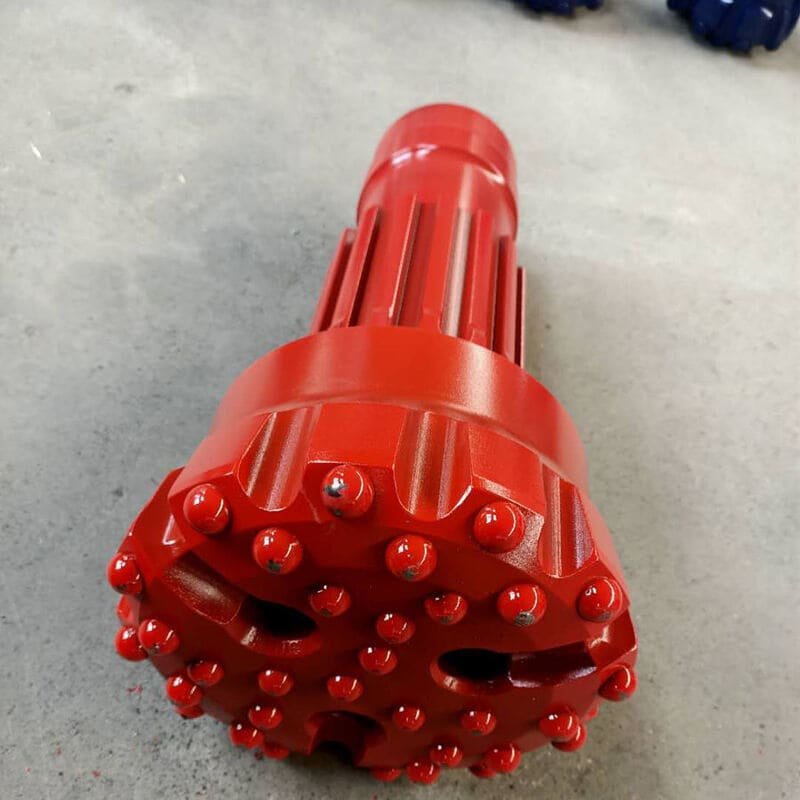Imagine standing at the edge of a drilling site, knowing that the success of the entire operation hinges on a tool designed just for you.
Creating a custom-designed DTH bit starts with understanding unique drilling needs, followed by meticulous design, prototyping, testing, and production. Each phase is tailored to optimize performance for specific geological conditions.
Each stage of developing a custom DTH bit feels like a journey, much like planning the perfect road trip. First, there's the excitement of gathering all the details—kind of like deciding on destinations and stops. Then comes the design, where creativity meets technical precision, much like mapping out the best routes. Prototyping is like taking a test drive, ensuring everything runs smoothly before the big adventure. Testing and iteration are akin to those last-minute packing checks, ensuring nothing's forgotten. Finally, production is the green light to go full throttle, confident that every aspect has been carefully considered and crafted for peak performance.
Custom DTH bits enhance drilling performance.True
Custom DTH bits are tailored for specific conditions, improving efficiency.
Prototyping is the final stage in DTH bit development.False
Prototyping precedes testing and production in the development process.
What Factors Influence the Design of a DTH Bit?
Ever wondered what goes into crafting the perfect DTH bit?
Designing a DTH bit is all about balancing rock hardness, penetration rates, flushing efficiency, and equipment fit to tackle specific geological challenges effectively.
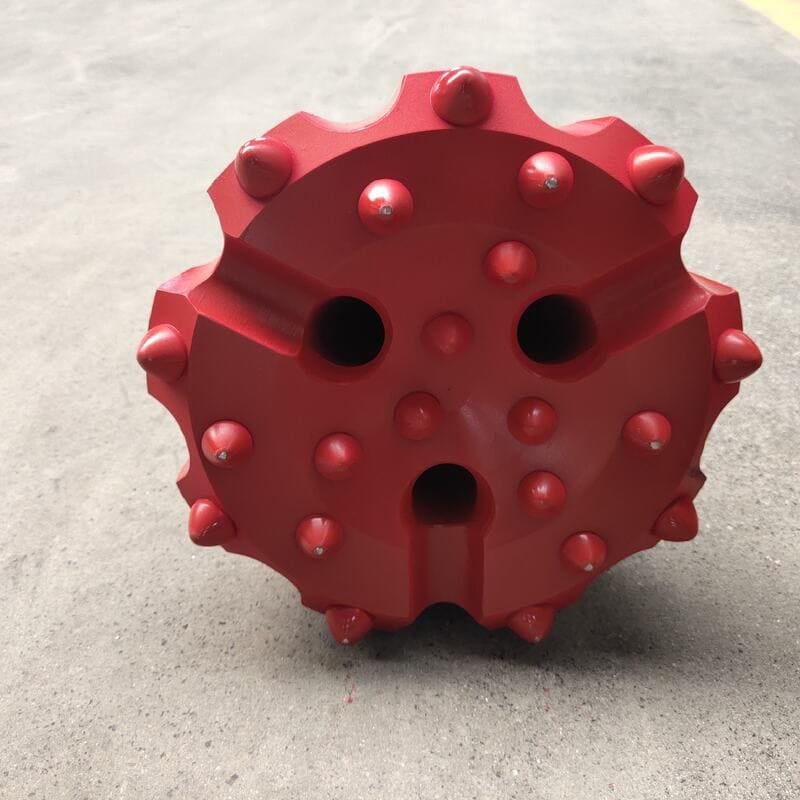
Geological Conditions
I remember the first time I faced the daunting task of drilling through a particularly stubborn patch of granite. It was clear that not just any DTH bit would do. The rock type1 we were dealing with demanded a robust design to withstand abrasiveness and handle fracture frequency. Soft rocks, on the other hand, allow for more flexibility and different materials.
Performance Expectations
Setting performance goals is like setting personal goals: challenging yet achievable. In my experience, aiming for high penetration rates2 necessitated durable carbide inserts that could take a beating without giving in. Aligning these goals with operational parameters helps maintain efficiency and avoid mid-project surprises.
| Performance Factor | Design Consideration |
|---|---|
| High Penetration Rate | Durable carbide inserts |
| Longevity | Wear-resistant materials |
Flushing Mechanisms
I once overlooked the importance of flushing configurations during a project, and it was like trying to dig with a spoon! Effective debris removal via well-placed flushing hole configurations3 keeps the bit cool and efficient, preventing costly downtimes.
Equipment Compatibility
You know how frustrating it can be when a new gadget doesn’t fit with your old tech? The same goes for DTH bits. Ensuring compatibility with your drilling equipment4 is crucial to avoid interruptions.
Customization Options
Every project is unique, much like the people working on it. Customizing a bit’s face design or tweaking carbide inserts can make all the difference in tackling specific geological challenges. This flexibility means you're prepared for whatever nature throws your way.
To delve deeper into these aspects, I recommend diving into industry resources or speaking with seasoned experts to refine your approach.
Soft rock requires robust DTH bit materials.False
Soft rock needs less robust materials; hard rock needs more durable ones.
Flushing holes aid in cooling the DTH bit during drilling.True
Flushing holes are designed to remove debris and cool the bit.
How Do Carbide Inserts Impact Drilling Efficiency?
Ever wondered how something as small as a carbide insert can make such a big difference in drilling efficiency?
Carbide inserts enhance drilling efficiency by providing exceptional hardness and wear resistance, which extends tool life and reduces the need for replacements. This ensures consistent high performance and minimizes operational interruptions, ultimately boosting productivity.
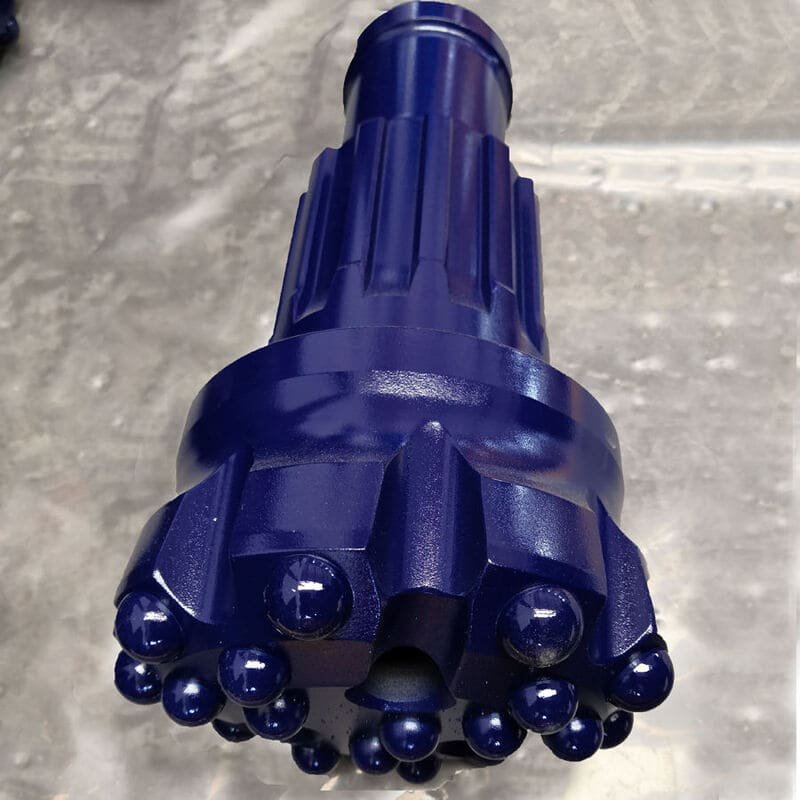
The Material Advantage of Carbide Inserts
I've been fascinated by the material science behind carbide inserts ever since I first saw them in action. Tungsten carbide, the key ingredient, is like the superhero of materials in drilling inserts5. Its incredible hardness and durability offer massive advantages over traditional steel. Imagine a tool that stays sharper longer and endures less wear over time, much like how a trusty old pocket knife keeps its edge through years of use.
| Material | Hardness (HV) | Wear Resistance |
|---|---|---|
| Tungsten Carbide | 1300-2000 | Excellent |
| High-Speed Steel | 600-900 | Moderate |
Enhanced Cutting Performance
One day, while watching a seasoned drill operator work, I noticed how effortlessly they sliced through layers of rock. This smooth operation was thanks to carbide inserts, whose geometrically optimized designs make all the difference. These inserts can be tailored to specific drilling needs, such as those in DTH applications, reducing chatter and vibration. It reminded me of how having the right tool for the job makes even the toughest tasks feel like a breeze.
- Ballistic Inserts: Perfect for softer formations.
- Spherical Inserts: Ideal for tough rock conditions.
Economic Benefits
Now, I know what you're thinking: "Carbide inserts sound great, but aren’t they expensive?" Initially, yes, but their long-term benefits outweigh the cost. With their extended tool life and fewer changeovers, companies can save significantly on labor costs and machine downtime. I once calculated the savings on a project I was consulting on and was amazed at how quickly the investment paid off.
Consider the economic impact in drilling operations6:
| Cost Factors | Steel Inserts | Carbide Inserts |
|---|---|---|
| Initial Cost | Lower | Higher |
| Replacement Frequency | High | Low |
| Downtime Costs | High | Low |
Versatility Across Applications
Carbide inserts are like Swiss army knives for drilling applications—from mining to construction, they handle it all. Their resilience to various environmental conditions makes them indispensable, especially in tough terrains like those encountered in oil and gas drilling. I've seen projects with tight deadlines breathe a sigh of relief thanks to these inserts’ faster penetration rates.
Customization for Specific Needs
What I love most about carbide inserts is their ability to be customized for specific tasks. This ensures that each insert is perfectly optimized for its purpose, boosting overall drilling efficiency. Companies often consult with specialists to choose the best insert types for their operations. This strategy not only ensures peak performance but also helps cut operational costs significantly.
The impact of carbide inserts on drilling efficiency is not just profound—it’s transformative. They offer countless benefits that boost productivity and cut costs, representing a significant leap forward in drilling technology. Integrating them into operations gives businesses a competitive edge in demanding industries.
Carbide inserts reduce drilling tool replacement frequency.True
Carbide's durability leads to longer tool life, reducing replacements.
High-speed steel is harder than tungsten carbide.False
Tungsten carbide's hardness (1300-2000 HV) surpasses high-speed steel.
How Does Simulation Transform DTH Bit Prototyping?
Ever wonder how engineers turn a concept into a reality without wasting resources? Enter the world of simulation in DTH bit prototyping!
Simulation is pivotal in DTH bit prototyping by allowing engineers to virtually test and refine designs before physical trials, cutting costs, speeding up development, and boosting performance.

Understanding Simulation in DTH Bit Prototyping
I remember the first time I saw a simulation in action. It was like watching magic unfold on a computer screen. Engineers, myself included, could create these virtual models of DTH bits, predicting how they'd fare in actual drilling conditions. By feeding in different geological and operational parameters7, we could foresee outcomes like wear patterns and penetration rates. It was like having a crystal ball!
Benefits of Using Simulation
-
Cost Efficiency
- Simulation dramatically reduces the need for numerous physical prototypes. Imagine saving not just on materials but also on production costs. It's a real game-changer.
-
Enhanced Design Accuracy
- Precision in design is achievable with these tools. I can tweak the bit face profiles or adjust carbide insert configurations with utmost accuracy.
-
Time-Saving
- Remember the days when prototyping felt like a marathon? Now, quick iterations in a virtual setting make it more like a sprint, enabling swift adaptation to feedback.
| Benefit | Description |
|---|---|
| Cost Efficiency | Reduces material and production costs |
| Enhanced Accuracy | Allows precise modeling and design adjustments |
| Time-Saving | Accelerates prototyping through quick iterations |
Simulation Techniques in Practice
-
Finite Element Analysis (FEA)
- I've used FEA to map out stress distribution within the bit structure, which unveils potential weak spots. It's invaluable for optimizing material use while keeping strength intact.
-
Computational Fluid Dynamics (CFD)
- CFD simulations have been my go-to for assessing flushing hole configurations by visualizing fluid flow dynamics. This ensures efficient debris removal during drilling, enhancing both bit longevity and performance.
Real-World Applications of Simulation
Simulation empowers manufacturers8 to fine-tune designs for specific geological challenges, such as different rock hardness levels or abrasive environments. By simulating these scenarios, manufacturers can craft products that not only perform optimally but also guarantee reliability and durability across varied applications.
| Simulation Technique | Application Area |
|---|---|
| Finite Element Analysis | Stress distribution and material optimization |
| Computational Fluid Dynamics | Flushing efficiency and debris management |
The strategic use of simulation in DTH bit prototyping isn't just about innovation; it gives companies the power to deliver high-performance products tailored to meet unique drilling challenges head-on.
Simulation reduces the need for physical prototypes in DTH bit design.True
Simulation allows virtual testing, minimizing physical prototype requirements.
CFD simulations are used to optimize material strength in DTH bits.False
CFD is used for fluid dynamics, not material strength optimization.
How is Field Testing Conducted for a New DTH Bit?
Ever wondered what it takes to ensure a new DTH bit is ready for the tough terrains and demanding conditions of real-world drilling?
To field test a new DTH bit, I deploy it in genuine drilling settings, watching its performance, durability, and efficiency closely. I track penetration rates, examine wear patterns, and gather invaluable operator feedback to fine-tune the design.
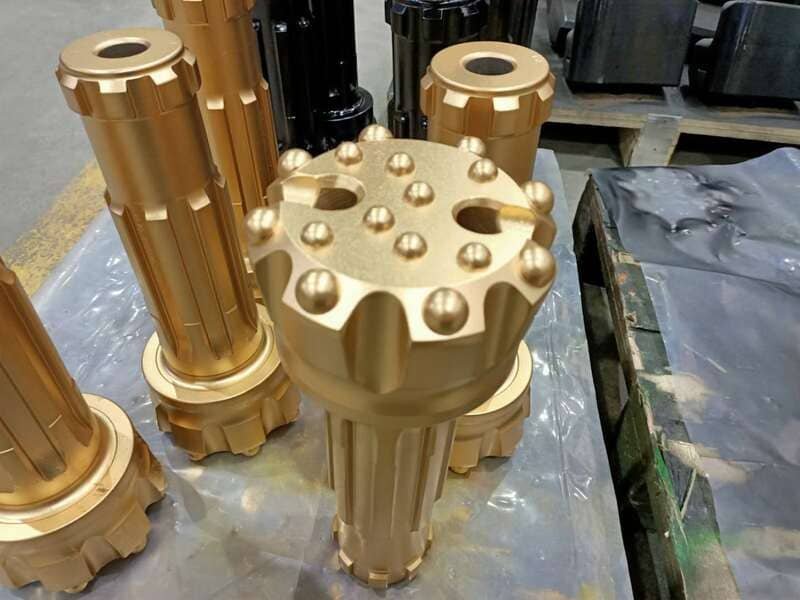
Understanding the Importance of Field Testing
Field testing provides invaluable insights into how a new DTH bit performs under various geological conditions. It bridges the gap between theoretical design and practical application, ensuring that the bit meets or exceeds performance expectations. Key parameters evaluated include penetration rate, wear resistance, and overall durability.
Setting Up for Field Testing
Field tests are usually conducted in locations that mimic the operational conditions anticipated for the bit's use. Selecting the right drilling environment9 is critical as it must reflect the types of rock formations and depths the bit will encounter.
A typical setup involves:
- Defining Objectives: Clearly outline what the test aims to achieve, such as validating wear resistance or confirming penetration efficiency.
- Choosing Test Sites: Select sites that offer varying rock types and hardness levels.
- Preparing Equipment: Ensure all necessary drilling equipment is calibrated and ready for operation.
Execution of Field Tests
Once the setup is complete, the prototype DTH bit undergoes rigorous testing. A comprehensive plan includes:
- Performance Monitoring: Utilize sensors and data acquisition systems to monitor real-time performance metrics like RPM, torque, and penetration rate.
- Data Collection: Gather quantitative data on wear patterns, bit life, and any failure modes encountered.
- Operator Feedback: Collect qualitative feedback from operators who can provide insights on bit handling, efficiency, and ease of operation.
Analyzing Test Results
After all the dust settles, literally and figuratively, comes the analysis part. Comparing expected vs. actual performance often reveals surprises—some pleasant, others not so much. I use tools like data analysis software10 to dig deep into the results, helping me understand what needs tweaking. This step is all about refining and iterating based on real-world performance.
Key Steps in Analysis:
- Comparing Expected vs. Actual Performance: Spotting discrepancies is like detective work—I love it!
- Identifying Wear Patterns: Examining wear tells me how materials and designs impact the bit's lifespan.
- Design Iterations: Every insight leads to a better design, focusing on enhancing weaker areas.
Documentation and Reporting
Creating detailed reports is essential for documenting findings from field tests. These reports should include:
- Test Conditions: Document environmental and operational conditions during testing.
- Performance Metrics: Include tables summarizing key performance indicators.
- Recommendations for Improvement: Offer actionable recommendations for refining the DTH bit design based on test outcomes.
Incorporating comprehensive documentation ensures that stakeholders are informed about test results and the rationale behind any subsequent design changes. Explore more about documentation standards11 in field testing to maintain consistency across projects.
Field testing evaluates DTH bit penetration rate.True
Field testing assesses how effectively a DTH bit penetrates different geological formations.
Operator feedback is ignored during field testing.False
Operator feedback is crucial for understanding the handling and efficiency of the DTH bit.
How Do Quality Control Measures Ensure the Durability of DTH Bits?
Have you ever wondered what keeps those drilling bits going strong, even in the harshest conditions?
Ensuring the durability of Down-The-Hole (DTH) bits involves meticulous quality control measures such as selecting high-grade materials, precision manufacturing, and comprehensive testing. These steps are crucial for high performance and longevity, making them indispensable for efficient drilling operations.
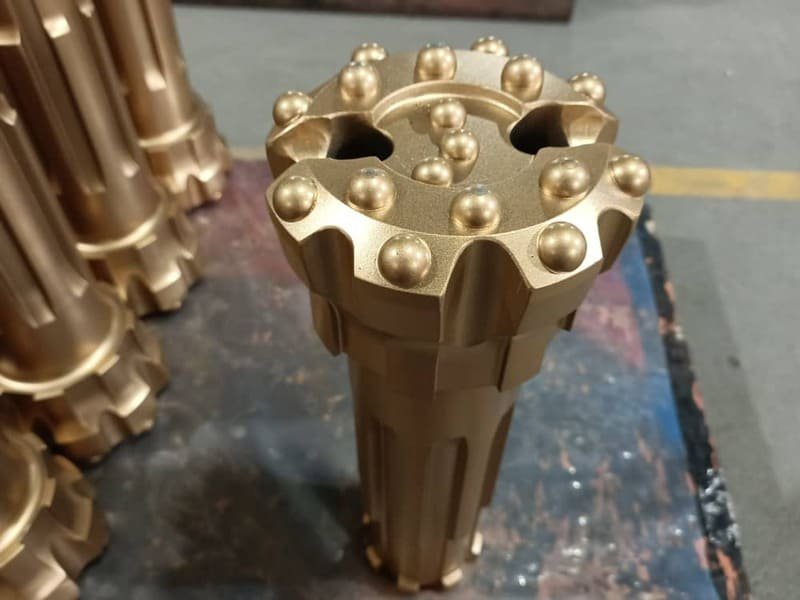
Rigorous Material Selection
I remember the first time I learned about the importance of choosing the right materials for DTH bits. It was during a project where we had to drill through incredibly hard rock formations. The bits we used were made from high-grade steel and tungsten carbide, renowned for their strength and wear resistance. They passed rigorous quality checks, ensuring they met specific standards12, which made all the difference.
Quality Assurance Process
- Raw Material Testing: This is where it all begins. Before production, we test materials for purity and strength to ensure they can handle the job.
- Supplier Audits: Regular audits of our suppliers are a must to maintain consistent quality. We've learned this lesson the hard way.
- Batch Traceability: Every batch is tracked meticulously. This traceability helps us maintain high standards and quickly address any issues.
| Material | Properties | Quality Checks |
|---|---|---|
| Steel | Strength | Purity, Hardness |
| Carbide | Wear Resistance | Density, Composition |
Precision Manufacturing Techniques
Precision in manufacturing is non-negotiable. I've seen how CAD and CAM technologies create exact specifications, ensuring each bit is reliable. During one memorable project, heat treatment processes strengthened our bits by altering their microstructure, while grinding and polishing reduced surface defects. Adding coatings further enhanced wear resistance—an absolute game-changer.
- Heat Treatment: This process strengthens the bit by altering its microstructure.
- Grinding and Polishing: These steps reduce surface defects and improve performance.
- Coating Applications: Applying coatings can further enhance wear resistance.
Comprehensive Testing Procedures
Testing is critical to ensuring that DTH bits can withstand harsh drilling conditions. Tests simulate real-world scenarios to evaluate a bit's performance over time.
- Field Testing: Real-time testing in various geological conditions provides valuable data on bit performance.
- Wear Analysis: Examining wear patterns helps refine designs for improved longevity.
- Performance Benchmarking: Comparing performance against industry benchmarks ensures competitiveness.
Continuous Improvement and Feedback
Feedback from field operators has been invaluable in shaping our DTH bits. I remember one instance where operator insights led to design adjustments that significantly improved performance. Testing alternative materials or coatings and refining manufacturing processes based on real-world feedback has been part of our continuous improvement ethos.
Incorporating Feedback:
- Design Adjustments: Thanks to operator feedback and wear patterns.
- Material Modifications: Testing new materials or coatings can lead to breakthroughs.
- Manufacturing Refinements: Streamlining processes helps reduce defects.
The Role of Certifications and Standards
Compliance with international standards like ISO is crucial. These certifications assure clients of the reliability and durability of our equipment—something I've seen firsthand make a big difference in client trust and satisfaction.
Example Standards:
- ISO 9001: Quality management systems.
- ISO 14001: Environmental management systems.
- Industry-Specific Standards: Tailored standards for drilling applications.
By adhering to these quality control measures, I've witnessed how we produce DTH bits that withstand the rigors of intense drilling operations, providing users with reliable and long-lasting tools.
High-grade steel is used for DTH bit durability.True
High-grade steel is chosen for its strength and wear resistance.
ISO 14001 ensures quality management in DTH bits.False
ISO 14001 focuses on environmental management, not quality control.
Conclusion
Custom-designed DTH bits are developed through a meticulous process involving requirements gathering, design, prototyping, testing, and production to optimize performance for specific geological conditions.
-
Understanding different rock types helps tailor DTH bits for optimal performance. ↩
-
Higher penetration rates require specific design features for efficiency. ↩
-
Efficient flushing is crucial for debris removal and cooling during drilling. ↩
-
Ensuring compatibility prevents operational interruptions and maintains efficiency. ↩
-
Discover how tungsten carbide's properties make it ideal for use in drilling tools, providing superior hardness and durability. ↩
-
Explore the cost-effectiveness of carbide inserts and how they lead to long-term savings in drilling operations. ↩
-
Discover how setting accurate simulation parameters enhances DTH bit design for specific geological conditions. ↩
-
Explore real-world examples of successful simulation applications in manufacturing, highlighting efficiency improvements. ↩
-
Learn about selecting optimal sites that reflect realistic conditions for accurate DTH bit testing. ↩
-
Discover reliable software solutions for analyzing field test data effectively. ↩
-
Explore best practices for documenting field test results to ensure clarity and consistency. ↩
-
Discover how high-grade steel and tungsten carbide are tested for quality in industrial applications. ↩

